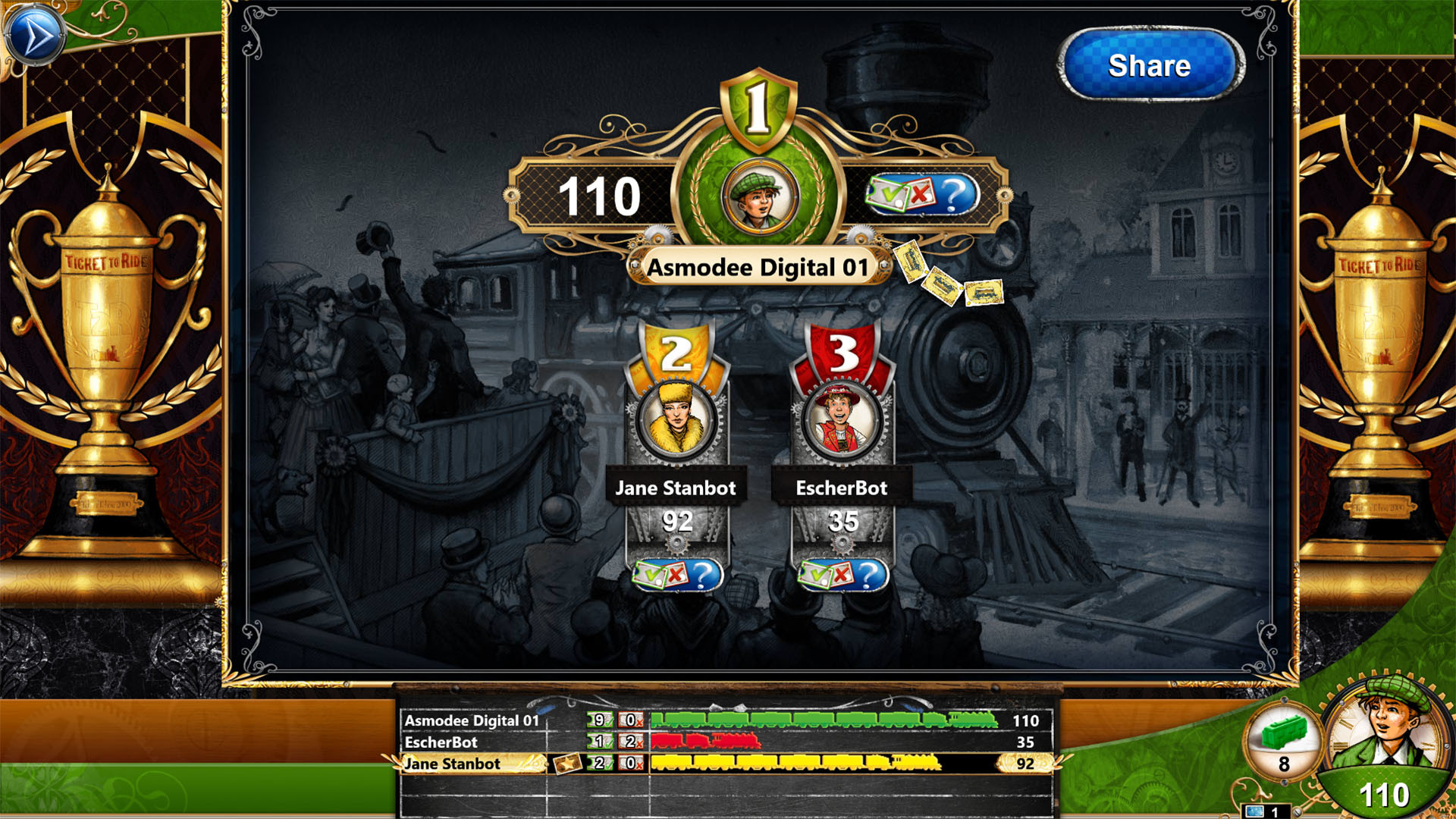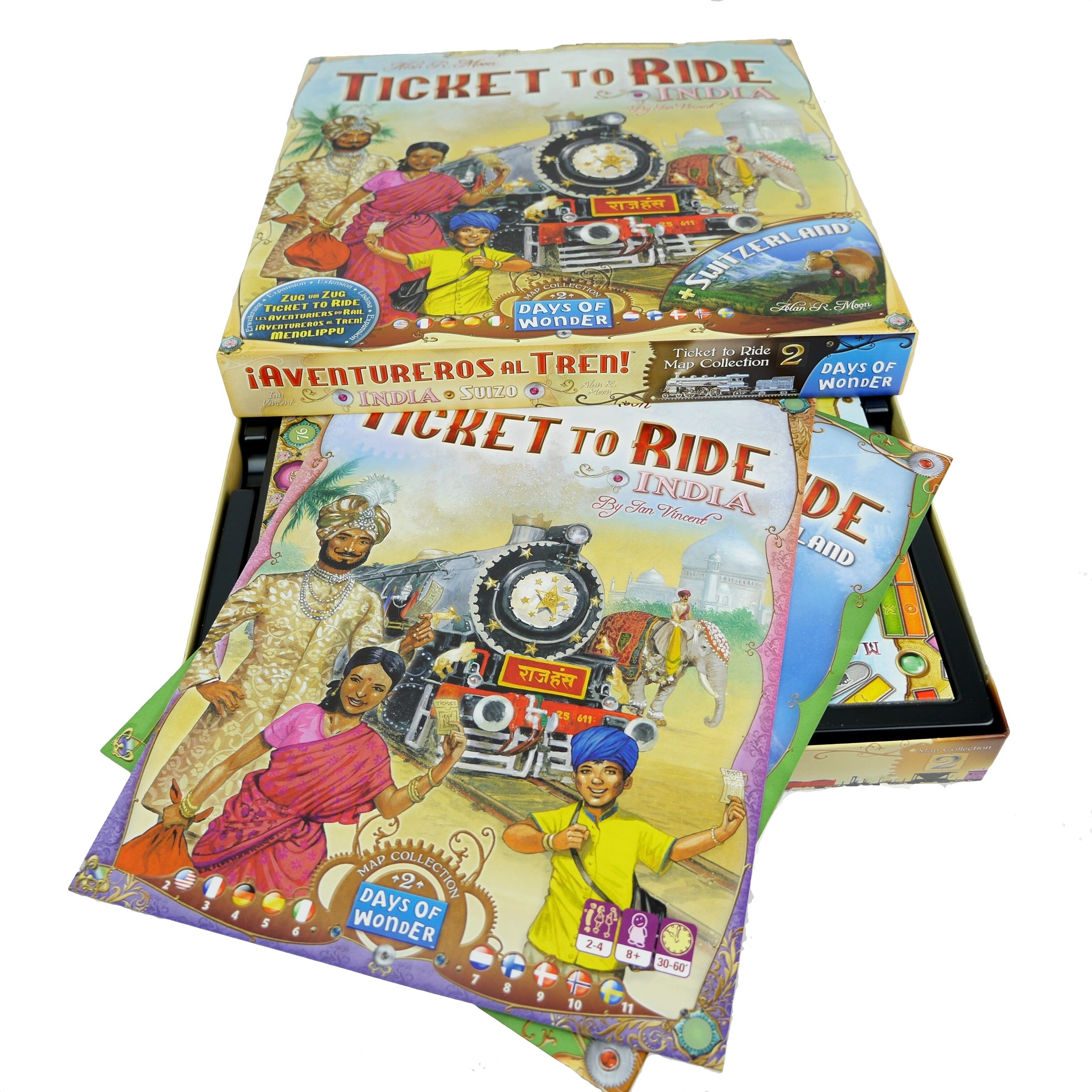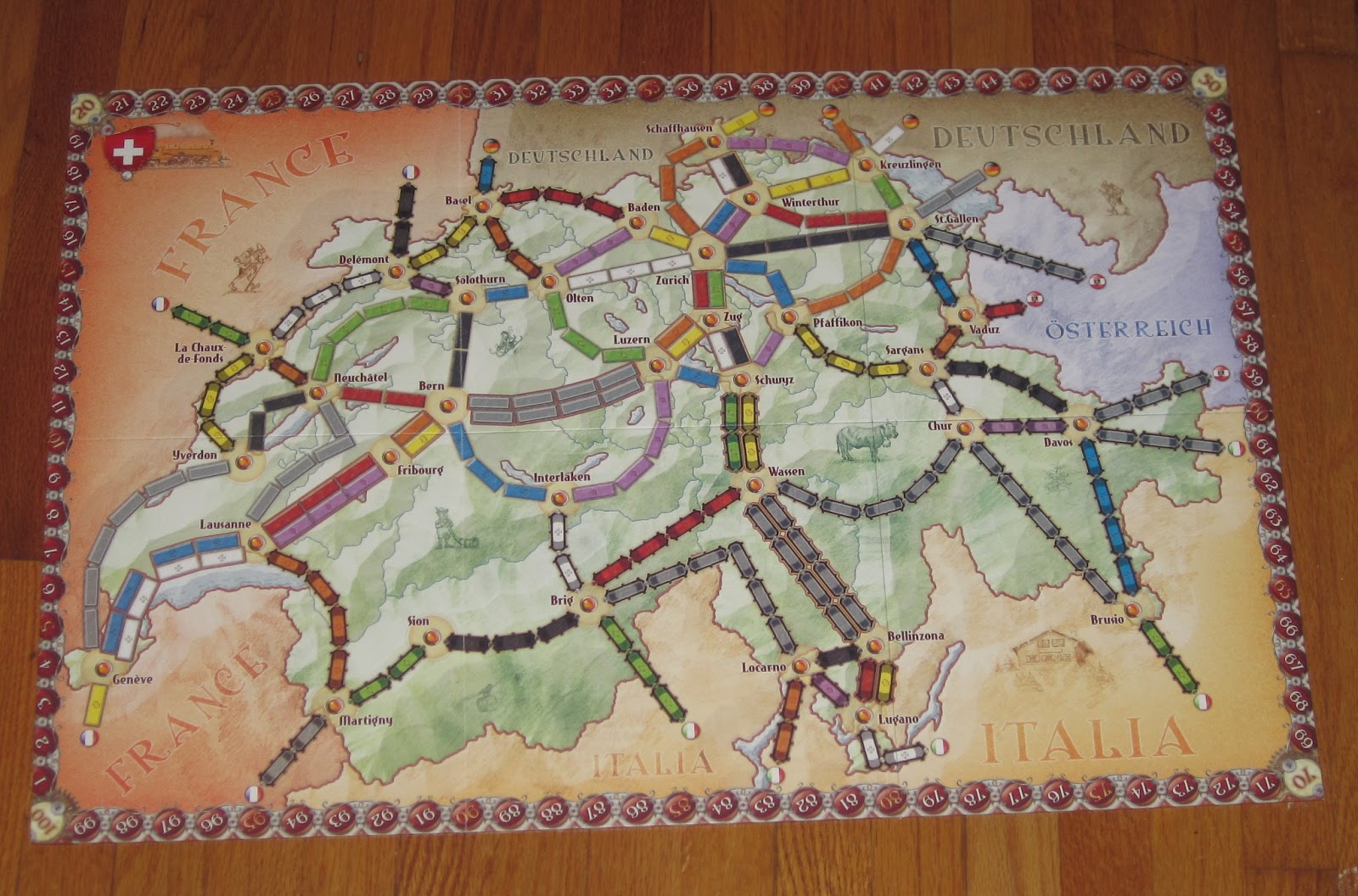

Build as many 5 and 6 car routes as you can. Take cards off the top of the deck for about 20 turns so you have a lot of cards to work with, then start claiming routes. End the game as quickly as you can while building the longest train routes that you can, regardless of what your destination cards are. Another Good Strategy That Isn’t Much FunĪlthough not in the spirit of the game, at the start of the game keep the destination cards with the lowest points. If you’re interested in good games for two players you can check out what the best versions of the game are for that at this page on my website. All you need to claim the longest routes are six cards of one color. Once you get five cards of one color you can stop collecting them in case you get a wildcard when you do draw. This stalls their route building just a little longer giving you more time to finish yours. When using either of these strategies you can slow other players down by taking cards that are face up instead of drawing if you know they need colors that are showing. Have extra trains available so you can deal with that eventuality also. A long route is easily blocked, even inadvertently, since it covers such as large area and is bound to cross over someone else’s planned route. And remember long routes can be difficult to complete and are easy to block, even if your opponent doesn’t know what your route is.

It’s a big disappointment when you’re close to the end of the game and are expecting big points from that last, long route, only to finally notice that you’re a train or two short of being able to complete it. On the next draw if you do get a long route for a destination card make sure you have enough trains to complete it before keeping it. It all depends on how you like to play the game. Hopefully you’ll get some routes that have common segments with the ones you’ve already built.Įither strategy is a good option if you get a long one and two short ones since I’ve won lots of games using both strategies, you can chose to keep the two short ones that work well together or keep the long one and remember, you only need to keep 2 out of 3 of these destination cards at the start of the game. Once they’re completed (quickly since they’re short and if you’re a little lucky) you can draw three more destination cards. If none of them are close together or have common segments keep the two shortest ones. Instead keep 2 or 3 short routes that are close together so they have common segments, allowing you to essentially work on two routes at once. The next strategy is a good strategy if you don’t draw a long route as a destination card at the start of the game. Take the shortest path possible when completing a destination card unless going out of your way helps you complete two routes at once, giving you more points for less trains and in less turns.
#Ticket to ride switzerland plus#
This “long route” strategy also gives you more opportunities to add on to a completed route since you have more route segments, resulting in more points in less turns plus getting those bonus cards helps too. For example, if you build a route from Los Angeles to New York, and then are lucky enough to draw the Los Angeles to Chicago card, you’re likely to have already finished that route so you get an additional 16 points without even trying! This also gives you a springboard to build “branch routes.” These require minimal trains and less turns to complete if you’re lucky enough to draw destination cards that build on one you already have.

The more one destination card shares segments (routes) with another destination card the better. These are easy points with minimal build time. If you have other destination cards that fit into this route by having common segments, keep them. The first strategy is to try to keep at least one long route at the start of the game if you draw it. As the game progresses and you draw more destination cards keep cards that build on to your other routes, resulting in more points with less trains in less turns.Īfter researching dozens of posts, videos and websites, plus using hundreds of hours of personal game experience, it turns out that one of two fundamental strategies is the best, depending on the destination cards you are dealt at the beginning of the game. The best winning strategy is to keep routes at the start of the game that are geographically close to each other. At the end of the game you count up the number of points for your routes, add the points for your completed destination cards and subtract points for those that haven’t been completed, then add in any points from special bonus cards that you’ve earned. This game is a “cross-country train adventure” according to the Ticket To Ride rules.


 0 kommentar(er)
0 kommentar(er)
